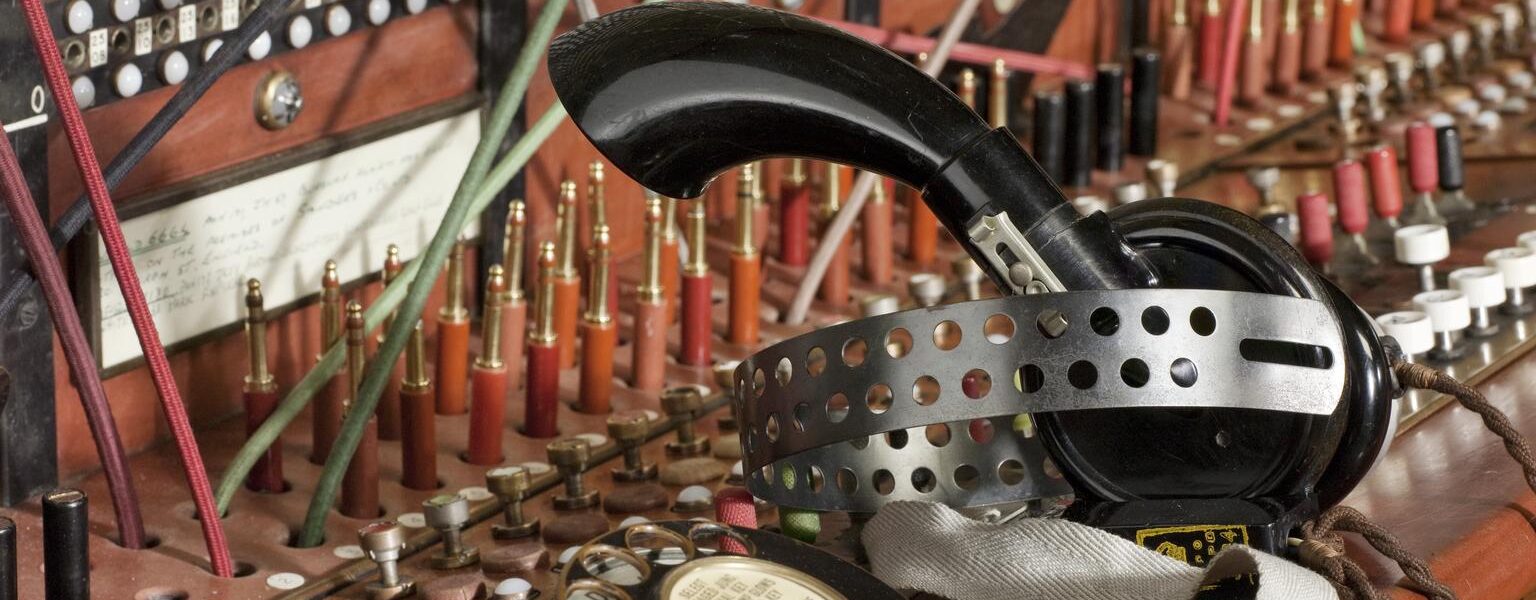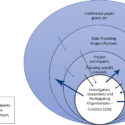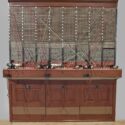The role of digital humanities in an interdisciplinary research project
Article DOI: https://dx.doi.org/10.15180/221812
Abstract
This discussion paper will reflect on the contribution of digital humanities (DH) to a complex interdisciplinary project like the Congruence Engine. It begins by considering how DH has developed within the larger history of interdisciplinarity in the humanities, crossing boundaries within and between disciplines and sectors, and facilitating collaboration and knowledge exchange. It discusses the growth of large-scale digital projects in the humanities, shaped by the nature and scope of the data increasingly available to humanities researchers, by the new kinds of research questions that can be asked, but also by changes in broader funding and policy landscapes. It considers three recent projects which exemplify the value of DH in interdisciplinary contexts, before reflecting on how DH methods and approaches have influenced the shape of the Congruence Engine. It situates the practices of the Congruence Engine in the wider context of knowledge exchange, focusing in particular on the concept of ‘trading zones’, and draws out the complementarity between the bridging or translational role of DH and the systemic action research framing of the project. Finally, it highlights the value of responsible openness not just in relation to published research outputs but to research practice and process.
Keywords
collaboration, data, digital humanities, Interdisciplinarity, open knowledge
Introduction
https://dx.doi.org/10.15180/
Digital humanities (DH) is notoriously hard to define. Writing in 2013, Terras et al noted that ‘Answering the question “What is Digital Humanities?” continues to be a rich source of intellectual debate for scholars’ (p 6), and that remains just as true a decade later. Discussion has ranged across what to include and exclude from DH, the connections between and relative importance of theory and practice, the relationship between DH and the humanities more broadly, and many other topics covered in the increasing number of companions, handbooks and readers that have grown up around the field (see, for example, Terras et al, 2013; Schreibman et al, 2016; O’Sullivan, 2022). In recent years, the term ‘digital scholarship’ has been gaining traction, notably in the cultural heritage sector (both Research Libraries UK and the Consortium of National and University Libraries in Ireland, for example, have Digital Scholarship Networks). Digital scholarship includes DH, ‘but goes beyond the digital humanities and encompasses a wider array of subjects across arts, humanities, social sciences, and STEM’ (Greenhall, 2019, p 10). In 2015, when one of the major journals publishing DH research changed its name from Literary and Linguistic Computing, on the grounds that this no longer reflected the field, the chosen title was Digital Scholarship in the Humanities. As the editor explained, this renaming would take into account ‘all digital scholarship undertaken in the Humanities in its widest meaning’; ‘the Journal…will not limit itself to the Digital Humanities and welcomes (interdisciplinary) contributions from fields akin to the Digital Humanities’ (Vanhoutte, 2015).
It is no surprise, then, that DH has generally been located within the larger history of interdisciplinarity in the humanities, while considering the roles of paradigm and disciplinary change, the increased crossing of boundaries between the humanities and social sciences or other disciplines, and the mobility of (epistemological) concepts and methodologies (Davidson and Savonick, 2017). In addition, DH work and practice has been heavily shaped and performed outside academia, by organically enabling collaborations and partnerships with cultural heritage institutions, infrastructures and creative industries (Benardou et al, 2019). Lately, DH has also gradually been embracing a wider, cross-disciplinary field of inquiry on materiality, ethics, cultural critique, gender, power and politics around technologically enabled knowledge production and distribution (Liu, 2012; Losh and Wernimont, 2018; McGrail et al, 2021).
This desire to think beyond DH, even while its definition remains contested, seems to us to reflect one of the key characteristics of DH – and broader digital scholarship – namely, its embrace of interdisciplinarity and collaborative ways of working. This discussion paper will reflect on the contribution of DH to complex interdisciplinary projects, using the Congruence Engine as a case study. It will focus in particular on the value of DH, and DH researchers, in bridging perceived gaps between disciplines and in translating between the computational and, in this instance, the historical.
DH research does not have to be characterised by interdisciplinarity and collaboration, but it commonly – perhaps increasingly – is. Projects with a DH focus or key component bring together people with the range of complementary skills and disciplinary and professional backgrounds needed to tackle questions which often involve complex and large-scale data and/or significant computation capacity (network, storage, software, hardware) as a prerequisite.[1] Kemman (2019) suggests that ‘One of the defining characteristics of digital humanities is the emphasis on interdisciplinary collaboration’ (p 1), and describes DH as ‘a meeting place between the computational domains and the humanities’ (p 14). This bridging or translating function of digital humanities has been widely discussed (see Edmond, 2005; Siemens, 2009; Svensson, 2011), but Klein (2015) warns that ‘The popular characterization of DH as bridging two cultures – humanities and technology – obscures the role of increased boundary crossing between humanities and a third culture – social sciences’ (p 25). The bridge-building or boundary crossing – whichever metaphor resonates more – extends beyond ‘just’ bringing together the humanistic and the computational. It is as much about universities and museums or statisticians and linguists working together as it is about computer scientists and historians collaborating in pursuit of shared goals.
While DH in the UK is well established at Master’s level and above, it remains the case that many who develop careers in DH research have started out somewhere else, whether in a different ‘home’ discipline, for example history or English, or with different professional training, for example in archival or information science. They have often themselves had to make what can be a challenging transition into the digital sphere, developing new skills, negotiating new languages and technologies, and confronting the gaps in their own knowledge. They have an ‘in-between’ (Klein, 2015, p 29) or hybrid status, something which might also be said to reflect the development of the field as a whole. ‘In-betweenness’ can be uncomfortable, and it presents significant challenges for career development and recognition, but it can also be vital to the successful delivery of the kinds of ambitious interdisciplinary projects that are increasingly being funded in the UK and elsewhere. As Edmond (2020) notes, ‘Interdisciplinary work is…generally required to provide some kind of narrative to explain how its component parts fit together’, which in turn requires the development of particular competencies and a degree of comfort in working in the space(s) between disciplines. This is where DH thrives.
The growth of collaborative digital projects
https://dx.doi.org/10.15180/221812/002A survey of the DH landscape in the UK commissioned in 2017 found that the Arts and Humanities Research Council (AHRC) was, by some margin, the most important funder for DH research in the country – 57 per cent of respondents to a survey indicated that they had received AHRC funding for a digital project within the past three years (Marketwise Strategies, 2017, p 7). The AHRC has an established track record of supporting digital research in the humanities, from the AHRC ICT Methods Network (2005–2008) to its Digital Transformations strategic theme (launched in 2013) and recent bilateral digital funding programmes such as the UK-Ireland Collaboration in the Digital Humanities (2019-) and the NEH/AHRC New Directions for Digital Scholarship in Cultural Institutions (2020) calls. Interdisciplinary collaboration, both small- and large-scale, is explicitly encouraged in, if not mandated by, these programmes, and it is fostered within a DH framework. There are many strong examples of influential, indeed transformative, projects that have been funded under these and other schemes, but we have chosen to highlight three of which we have direct knowledge or experience. All are both cross-sectoral and interdisciplinary and involve applying DH methods and approaches to cultural heritage data at scale.[2]
The first example, Born Digital Big Data for the Arts and Humanities (BUDDAH, 2014), was one of 21 big data projects funded by the AHRC under its Digital Transformations in the Arts and Humanities theme. It involved multiple forms of collaboration: cross-sectoral (between the British Library and university partners in London and Oxford); international (between UK institutions and Aarhus University in Denmark); and interdisciplinary (between the Oxford Internet Institute and the Institute of Historical Research, University of London). The aim of the project was to contribute to the development of a theoretical and methodological framework within which to study archived web data, and simultaneously to co-design an interface which would support access to the more than 65 terabytes of data pertaining to the UK country code top level domain (.uk) for 1996–2013 (see Cowls, 2017). In order to ensure that the interface to the dataset would meet the needs of the widest possible range of users, a cohort of ten early career researchers from a range of humanities and social science disciplines was engaged to work with developers at the British Library, a collaboration mediated through the project’s core DH team. The DH input was essential in developing a common language for the project, translating between researchers who had in most cases never previously engaged with the archived web and a highly skilled development team who had never worked closely with humanities specialists. Relationships were also facilitated among the ECRs, with the overarching DH framework enabling the identification and development of connections between researchers from backgrounds as diverse as history, modern languages, English studies, media studies, archaeology and politics. Deep interdisciplinary collaboration, involving the exchange of multiple forms of knowledge and the co-development of new skills, was shaped by and through DH.
Second, the Media Monitoring of the Past: Mining 200 Years of Historical Newspapers project, or impresso (i.e., ‘what has been printed’) for short (impresso, 2019), is a Swiss-Luxembourgish interdisciplinary, large-scale project that enables the critical text mining of newspapers (Swiss and Luxembourgish) through the implementation of a technological framework to extract, process, link and explore data from print media archives. Supported by an interdisciplinary consortium composed of computational linguists, digital humanists, designers, historians, librarians and archivists, impresso tackles the challenges of content enrichment and data representation, visualisation and analysis, completed by methodological and epistemological reflections and driven by research objectives in computational linguistics, history and design. Among the project outcomes one can find a set of natural language processing (NLP) tools dedicated to historical print media, innovative visualisation interfaces for interactive exploration and critical analysis of newspaper corpora in a transparent manner (known as ‘the app’), and a case study for source criticism and historiographical reflection on resistance to European unification in the late nineteenth and early twentieth centuries by addressing a digital blind spot. The interdisciplinary collaboration in impresso, as well as the development process for the research tools, and especially the interface, are grounded in the co-design method, where DH professionals play an important role. Historians contributed to the project by providing regular input on their needs and requirements to assist with the development of the research tools and interface. This co-design method has been further developed by the Congruence Engine project, which similarly involves DH researchers and historians both within and outside the university and cultural heritage sectors.
Our final example, Living with Machines, saw the single largest investment in a humanities-led project in the UK to date (£9.2m over five years) and it has undoubtedly marked a shift in the way humanities projects can be conceptualised, organised and funded. The ambition of the project is made clear in the first sentence of its website’s ‘About’ page: ‘Living with Machines is both a research project, and a bold proposal for a new research paradigm’ (Living with Machines, nd). It is as much concerned with new ways of working and new forms of interdisciplinary collaboration as it is with exploring the impact of the UK’s industrial revolution on society and culture. The project is a partnership between the Alan Turing Institute, the British Library, the universities of Cambridge, East Anglia and Exeter, and Queen Mary University of London, and it brings together data scientists, computer scientists, historians and library and information professionals. As with the other examples described here, DH provides one framework within which to situate the project and through which to connect its different communities and agendas. An initial key experiment with organisation and ways of working was the establishment of ‘labs’, for example a ‘Sources Lab’ and a ‘Language Lab’. While common in STEM, this was an innovative model for an interdisciplinary project with a humanities focus, and one which is arguably already beginning to influence the shape of other initiatives broadly in the DH field. Our Heritage, Our Stories, one of the Towards a National Collection Discovery projects, for example, has made use of the ‘lab’ structure, with an ‘Archives Lab’ and ‘History Lab’.
Living with Machines further enables day-to-day interdisciplinary collaboration through a series of thematic clusters based on the members’ evolving interests and has produced a series of diverse outputs, such as original datasets (press directories, historical newspapers) and derived datasets, data visualisations tools, software packages, digital research tools and code supporting published papers. Finally, the interdisciplinary, distributed team relies heavily on the use of cloud-based, collaborative tools and platforms, such as GitHub and Slack, and has developed a series of public engagement activities, workshops and tutorials to support the wider academic and cultural heritage sector in using digital methods to answer historical questions. This commitment to open knowledge and the sharing of process as well as published outputs extends to thoughtful public reflection on what it means to be part of a project of this kind. Nanni (2020), for example, talks about the project’s approach to acknowledging the multiple forms of contribution to a single published article, adapting CRediT (Contributor Roles Taxonomy) (NISO, nd). A key output of the project will be a monograph, published with Cambridge University Press, on Collaborative Historical Research in the Age of Big Data (Griffin et al, forthcoming). The work of the Living with Machines team has been a source of inspiration for the authors of this article, and we hope that it will encourage similar reflection on the processual in other DH projects.
Digital humanities within the Congruence Engine project
https://dx.doi.org/10.15180/221812/003The shift in the funding landscape marked by Living with Machines is evident from the Towards a National Collection (TaNC) programme, which is described as ‘a major five-year £18.9 million investment in the UK’s world-renowned museums, archives, libraries and galleries’ (Towards a National Collection, nd). Like Living with Machines, it is financed through UK Research and Innovation’s Strategic Priorities Fund, delivered by the AHRC. As described elsewhere in this special issue, Congruence Engine is one of five multi-partner Discovery projects supported by TaNC, all of which foreground DH methods and computational access to national cultural heritage. Among the many research questions addressed by the project, it is exploring how DH can offer a space within which to critically rethink and employ computational technology for historical inquiries and through which to enable creative collaboration as part of a large-scale interdisciplinary digital cultural heritage project. Necessarily, this involves testing the boundaries of collaboration too, and considering how individual agency can be preserved and encouraged in a collaborative setting.
The project unites in close collaboration a new constellation of researchers and professionals who would not normally work together: academic, GLAM and community historians, curators, DH professionals, documentation specialists, information architects and software engineers. The project includes a focus on three industrial sectors in turn – textiles, energy and communications – and orchestrates a number of iterative explorations as mini-investigations around these sectors/strands by developing routes, digital tools and narratives between records and digital objects from disparate collections.
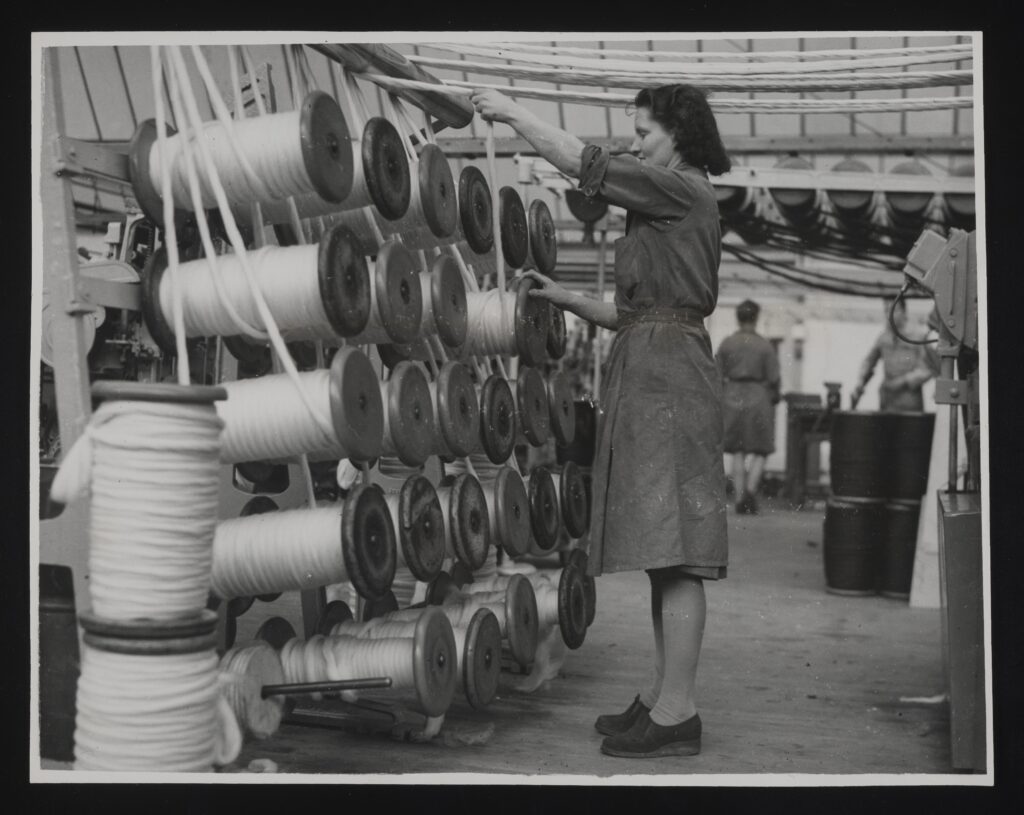
The representatives of the partner institutions in particular might be invited to actively participate by sharing data resources from their collections to be used as starting points in the mini-investigations or by contributing their expertise and insights while benefitting from applying the project’s digital methods and techniques to their own collections and practice. By welcoming from the outset various levels of engagement with the project among partners, collaborators and users, the Congruence Engine is designed in such a way that collections, organisations and people can move between more and less active roles in association with and within it. This open, flexible, collaborative ethos of the project has been aptly described by Tim Boon from the Science Museum, who is Principal Investigator of the project:
We are not building a congruence engine, we, the project participants, are the congruence engine. Ours is a human research enterprise where the interlinking ‘cogs’ are the participants and researchers doing mini-investigations, and the totality of what we research creates the congruence we aim for…if ‘Congruence Engine’ is metaphorically a machine, it is not one that gets rid of the quirks of individual, but rather one that foregrounds peoples’ specific interests, and is adjusted as it runs to respond to those interests as they develop (Boon, 2022).
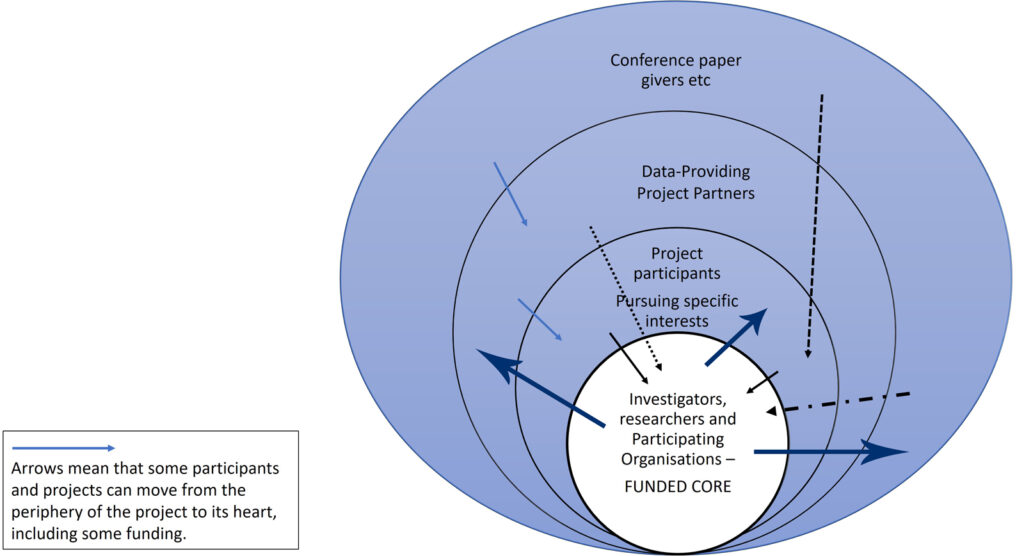
DH at the project level has been designed from the outset as a cross-strand inquiry with a dedicated work package, a supervisor and a full-time Post Doctoral Research Associate (PDRA) role. Indeed, DH has been structurally conceived as the ‘glue’ that, on the one hand, will help to shape the investigations by ‘translating’ historical inquiries into a set of technical requirements and computational processes and, on the other hand, will monitor, interrogate and seek to mitigate biases in collections, associated metadata and programming techniques employed throughout the project. The DH input, in other words, is focused on developing a common language for this group of people with a unique combination of backgrounds, skills and interests while employing a critical stance towards our historical and everyday computational practices. The DH PDRA works closely with people involved in all three industrial sectors/strands of the project by actively supporting engagement with digital methods and tools in their investigations and initiates discussions/inquiries spanning data science approaches, data modelling, responsible open research, data documentation and research data management. A commitment towards mutual learning and digital training can also be found within the DH PDRA’s remit, which has an explicit aim to enhance capacity building in digital tools and methods across the interdisciplinary project team, while benefitting from a vivid open DH educational community, including resources such as The Carpentries and The Programming Historian.
The role of DH in the Congruence Engine is also very closely connected to capacity building through training. There is an opportunity for all members of the project team to become involved in the development or use of digital tools which will help them to answer particular historical research questions, but degrees of previous exposure to the digital vary enormously. Similarly, in a project that aims to experiment with and combine a wide range of tools and approaches, even those who are very technologically proficient are unlikely to have worked with all of the tools, platforms and programming languages selected for use. These included, but are not limited to, open curatorial and exhibition platforms like Omeka, Wikidata for connecting collections data, and layout analysis and machine learning techniques for analysing the data in digitised trade directories. The importance of DH here is twofold: first, DH researchers bring knowledge of the range of tools and methods that might be brought to bear, alongside critical understandings of scope and suitability; second, DH researchers are often experienced in the delivery of digital training, and particularly in designing introductory courses for humanities researchers who are seeking to develop digital skills. The project PDRA designed a training needs survey, which will be repeated at intervals throughout the lifetime of the Congruence Engine, reflecting the changing nature of the project itself but also the growing expertise and developing requirements of the team. The results of the survey have informed an initial training programme, which begins with a ‘taster’ session that will introduce the data-cleaning tool OpenRefine and the power of working with Regular Expressions and the Command line. Responses to this session will determine where to focus more advanced training subsequently.
Digital Humanities work in the Congruence Engine is enabled by a systemic and participatory action research methodology, able to deliver a true inter- and multi-disciplinary investigation of complexity, and to ensure that the work is collaboratively documented and barriers to success are evaluated and addressed. A number of platforms and tools are used (BaseCamp, GitHub) to enable open, transparent, inclusive, day-to-day communication and collaboration across all team members. Furthermore, by structuring the team’s collaboration through working groups which are formed from the bottom up and evolve throughout, the project highlights people’s specific interests, needs and research priorities and is adjusted to meet those interests as they dynamically develop.
‘Trading zones’ and knowledge exchange
https://dx.doi.org/10.15180/221812/004As the experience of the first year of the Congruence Engine has demonstrated, DH has a key role to play in large-scale, complex, interdisciplinary projects that employ digital tools and methods. Multiple collaborators bring different levels and types of knowledge and expertise to projects of this nature, functioning as experts in sometimes discrete but more often overlapping spaces. This is formally recognised by the Congruence Engine in the adoption of the systemic action research methodology highlighted above. Systemic action research values different ways of knowing, both theoretical and practical, and co-operative modes of enquiry (Heron and Reason, 2006). This resonates with and is complemented by practice in DH, where both the hands-on and the theoretical are valued. The Centre for Contemporary and Digital History at the University of Luxembourg, for example, has coined the term ‘thinkering’, a composite of ‘tinkering’ and ‘thinking’, to capture the idea of experimentation and learning through doing that underpins so much DH research and adapts so well to collaborative project working (C2DH, nd).
Another point of connection is through the concept of ‘trading zones’, developed by Peter Galison ‘to describe how two communities with vastly different practices can interact and negotiate a joint enterprise’ (Kemman, 2021, p 4). In DH, or in Digital History as Kemman (2021) posits, these two communities might be computer scientists and humanities researchers, but multiple other combinations are possible; nor do we need to limit the communities involved to just two. The Congruence Engine, for example, involves multiple stakeholder groups, organisations and institutions, all of whom have something to exchange in a trading zone. Inevitably, though, as the number of communities and partners in a project increases, the relationships between them become harder to manage, and there is a risk that conversations become fractured or newly siloed. DH practices can contribute to maintaining the lines of communication and ensuring that knowledge is exchanged widely and generously, but without becoming overwhelming. This is the key work of translation and synthesis that enables interdisciplinarity.
As the Congruence Engine has progressed, the value of DH and data science expertise elsewhere in the project has become more and more evident. Postdoctoral researchers dedicated to each of the project’s thematic strands were recruited with a view not just to their cultural heritage and historical expertise but also their knowledge of and interest in digital tools and technologies. Partner organisations and team members, notably MadLab and Wikimedia UK, have deep technical knowledge which intersects at key points with DH. It took some experimentation to identify the most appropriate means for accessing this pool of knowledge without overloading any one member of the team. Initially separate DH and Data Science Working Groups (WGs) were set up, with the DH PDRA, as noted above, playing an important connecting role between these and other WGs. Subsequently, a new combined DH and Data Science WG has been established, complemented by the creation of a digital panel, which serves as a switchboard of digital expertise available to everyone in the project. This flexible approach to project organisation has helped to address one of the challenges which can be faced by projects of this kind, namely, that the work of connection and translation through DH can become over-concentrated, with consequent negative impact on the workloads of individuals.
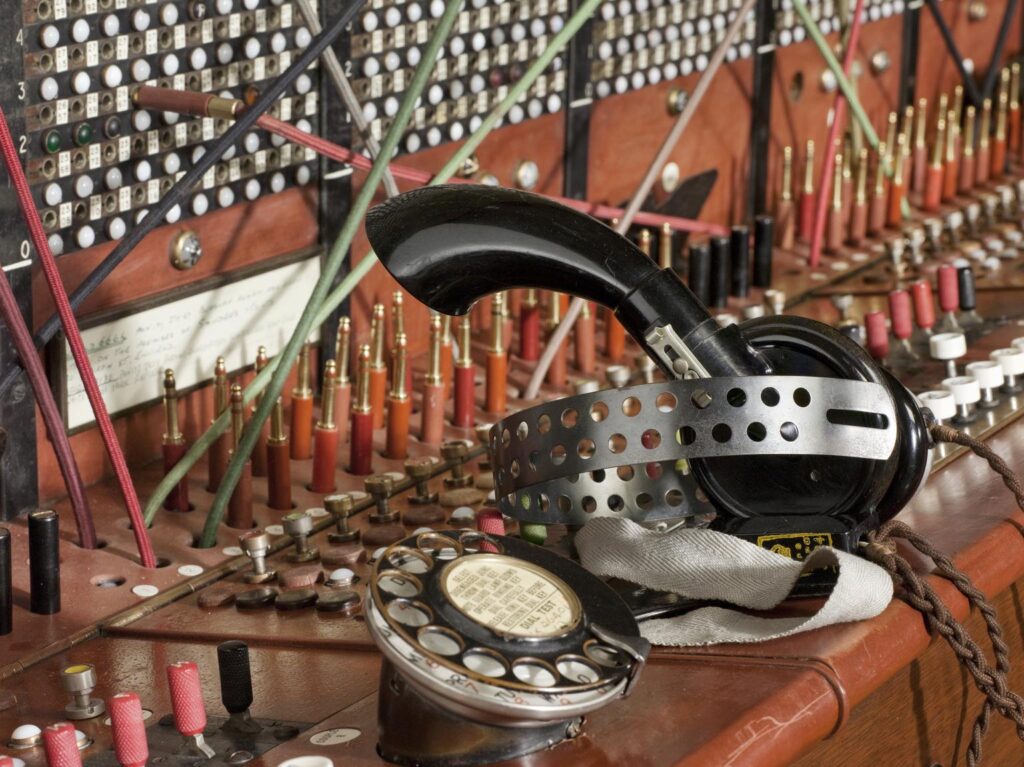
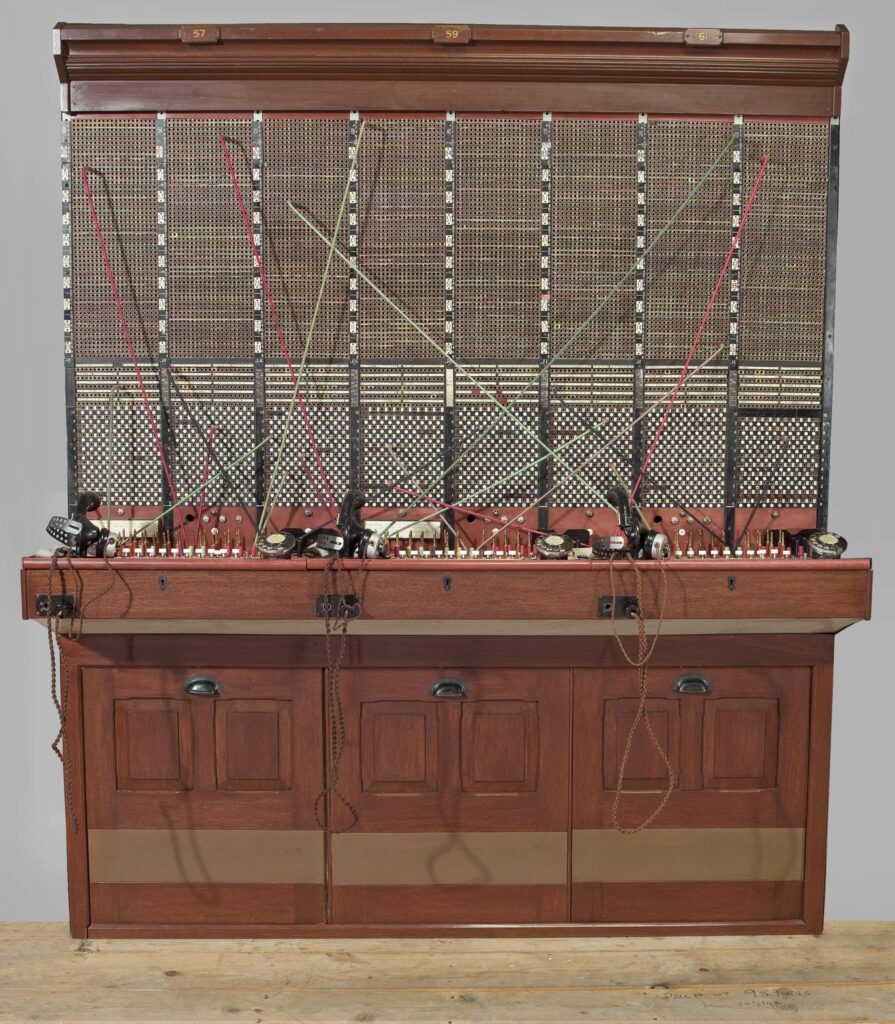
Conclusion
https://dx.doi.org/10.15180/221812/005DH as a community, work practice and ethos has pioneered in highlighting and addressing challenges and risks encountered in the daily practice of interdisciplinary research. However, there is still the need to enable spaces, mechanisms, resources and instruments where people can come, work and excel together: from creating adequate space, both theoretical and physical, for such investigations to flourish, developing common vocabularies and applying methodologies across fields, securing institutional and infrastructural frameworks, and developing agile administrative procedures and longer durations for interdisciplinary research projects, to supporting alternative or hybrid career paths and identifying metrics for evaluating careers that extend across multiple fields. A single project cannot effect this kind of cultural and organisational change, but it can provide an environment within which these ways of working can be explored, challenged and developed. It can encourage experimentation and tolerate a degree of failure in pursuit of innovation. It can also, through modelling responsible openness about process as well as results, help other digital projects and other interdisciplinary research teams to build effective collaborations, which are both influenced by and elaborate upon DH method and practice. Too often it is only at the end of a project, or even some time after it has formally concluded, that key findings are synthesised and disseminated. Open reflection on ways of working, discussion of the challenges as well as the enormous benefits of collaboration and partnership, and appropriate sharing of failure as well as success are all beneficial beyond the confines of an individual project. But this has to be managed carefully, to avoid unintentional damage and acknowledge individual voice and agency. A commitment not just to work openly, but to do so responsibly and ethically, underpins the true exchange of knowledge and the trading of expertise.
The TaNC programme acts as an incubator for digital research in the cultural heritage sector, providing an environment in which projects such as the Congruence Engine can help to shape future directions in research, practice, partnership and knowledge exchange. Digital Humanities methods and approaches contribute in all of these areas, by providing frameworks for knowledge exchange, bridging disciplinary and sectoral gaps, translating between different fields of expertise and diverse research cultures, and enabling new forms of open dissemination.
Congruence Engine is supported by AHRC grant AH/W003244/1.

